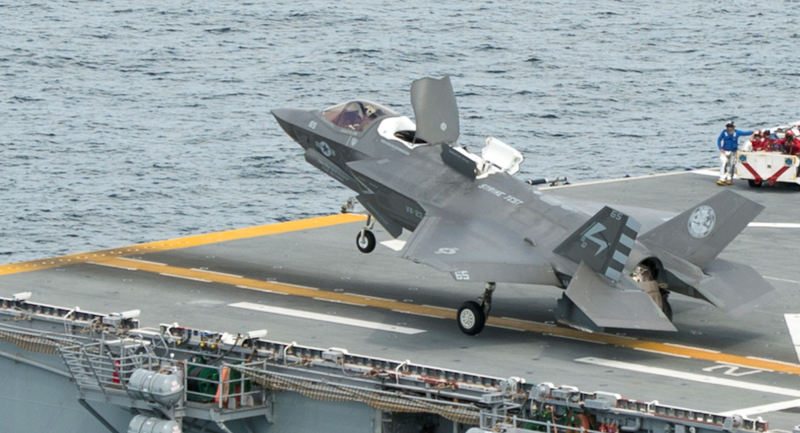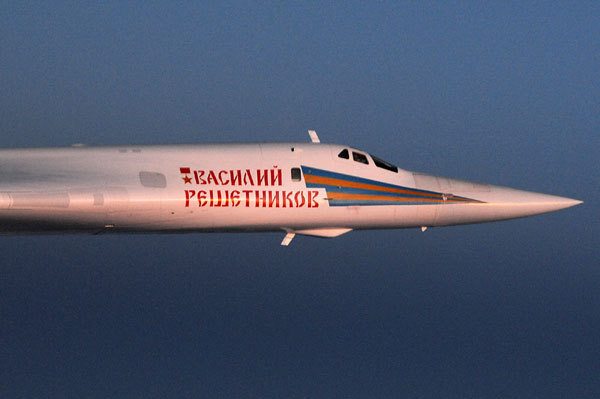Marines and sailors have worked together since May 18 to conduct Operational Testing 1, the assessment of the integration of the F-35B Lightning II, at sea, aboard USS Wasp (LHD-1).
Throughout OT-1, the aircraft and personnel involved have been challenged with a wide variety of flight and deck operations, allowing the gathering of data which will lay the groundwork for future F-35B deployments aboard U.S. Navy amphibious carriers.
“This operational test period that we are conducting is going to be a direct representative of fleet Marine Corps operating forces,” said Col. Robert Rauenhorst, the commanding officer of Marine Operational Test and Evaluation Squadron 22. “We are taking a look at how the F-35 program is developing, as well as ship modifications that have been worked through Naval Sea Systems Command, as well the F-35 Joint Program Office.”
OT-1 offered many first experiences for both personnel and the F-35B itself. One of these firsts was operational Marine Corps pilots landing the aircraft on a carrier at night.
“This is the first time we are doing this on a ship with six aircraft instead of two, and the standard Marine Corps footprint of roughly 150 Marines to work on the aircraft,” said Lt. Col. Michael Dehner, the F-35 Operational Test Director with the Department of the Navy, and the Deputy Combined Test Director with the Joint Strike Fighter Operational Test Team. “We are at that transition step before anyone will be able to use the F-35B as a warfighting platform.”
Not only is the F-35B the most versatile and technologically advanced aircraft in the skies today, it will also be replacing three legacy Marine Corps platforms; the AV-8B Harrier, the F/A-18 Hornet, and the EA-6B Prowler.
“I initially flew Harriers,” said Capt. Colin Newbold, an F-35B pilot with Marine Fighter Attack Squadron 121, Marine Aircraft Group 13, 3rd Marine Aircraft Wing. “It is a very different airplane to fly than the Harrier. However, it’s a great jet to fly, very pilot friendly. And I think we’ll find a lot of success with it.”
Another unique aspect of OT-1 has been the United Kingdom’s involvement.
Prior to and throughout the course of OT-1, Royal Navy and Royal Air Force personnel have been imbedded with both the Joint Strike Fighter community and participating Marine units to observe and receive hands-on training with the aircraft.
“For the United Kingdom, this is a great opportunity to see the same variant aircraft that they will procure work through that air-ship integration,” said Dehner. “It is valuable insight as they are working on the Queen Elizabeth Class Carriers.”
In addition to doing operational testing and seeing how the aircraft is compatible with the Marine Corps’ warfighting components, the ability to logistically support aircraft aboard a U.S. Navy amphibious ship was also assessed.
“Our learning points from this are going to not only stress the design, but also the logistics footprint for the aircraft,” said Dehner. “We want to see how it works in that confined space, which is the ship, as we get into when we want to deploy this aircraft with all the logistics support behind it. This is a great stress test.”
OT-1 has ultimately provided the Marine Corps and partner nations with a greater understanding of the F-35B’s capabilities, and a collection of data that will lay the foundation for future F-35B operations.
As of May 26, F-35B pilots aboard USS Wasp have flown more than 80 sorties from the ship. For the first time, the Marine Corps proved that a spare F-35B engine power module, a very large and intricate piece of machinery, can be safely transported from shore to ship in an MV-22 Osprey, providing depth to the Corps’ F-35B supply chain. Maintenance has been conducted around the clock; both to keep the F-35B in the air, and to assess the Marines’ ability to conduct complex maintenance procedures to simulate maintenance situations that could arise on a standard shipboard deployment.
“Being out here and participating in this is a milestone,” said Newbold. “We have accomplished so much in such a short period of time. It’s really great to be a part of something like this.”
OT-1 will continue through May 29. As the F-35Bs participating in the exercise will return to their home bases, Marine Fighter Attack Squadron 121, based in Yuma, Arizona, prepares to undergo an operational readiness inspection prior to the Marine Corps’ declaration of the F-35B’s initial operational capability, scheduled to take place this summer.










